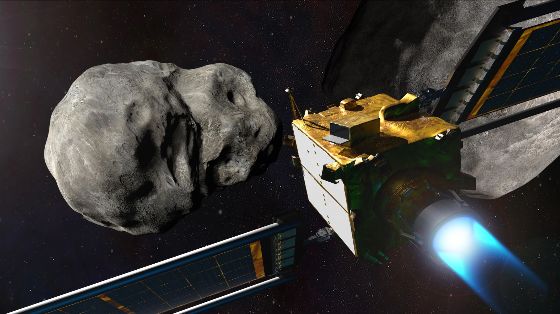
By Steven Mew, Australian Science Media Centre
A 100-metre-wide asteroid named 2024 YR4 has a 1.3% chance of hitting Earth in 2032 according to NASA-funded telescope observations, which have triggered global planetary defence procedures. But is it time to call Bruce Willis, Ben Affleck, and Liv Tyler in to blow it up?
According to Professor Jonti Horner, an astronomer from the University of Southern Queensland, the first thing to stress is – “Don’t panic!”. The asteroid was detected about a month ago, and according to Prof Horner the estimate of the likelihood that it hits Earth is getting better every time astronomers make a new observation.
“By far the most likely outcome is that, as more observations are made, it eventually becomes clear the asteroid will miss the Earth in 2032”, he told an AusSMC Expert Reaction.
However, if the asteroid is on a collision course with Earth, and we don’t redirect or destroy it, there could be some pretty dire consequences.
Associate Professor Katarina Miljkovic from Curtin University’s Space Science and Technology Centre suggested that if an impact did happen, the size of the asteroid means it could cause civil damage at a city-wide scale if it hit an urban area.
“For comparison, the Chelyabinsk meteor that exploded in Russia about 10 years ago was approximately a fifth of this asteroid size”, she said.
While Prof Horner compared the impact size to the 1908 Tunguska asteroid that also impacted Russia.
“That impact levelled a huge area (around 2200 square kilometres) of forest - but that was the extent of the damage it caused”, he said.
As you can imagine, 2200 square kilometres of damage could be devastating in an urban area, but Prof Horner was also quick to mention that the vast majority of Earth is covered by water, and that an impact in the ocean would produce “a spectacular light show but no-one gets hurt”.
So what can a global planetary defence procedure do to help us out, and who is in charge of actually sending Bruce Willis and Co. up there if we need to resort to that?
According to Dr Evie Kendal from the Ethical, Legal and Social Implications of Emerging Technologies (ELSIET) research group at Swinburne University of Technology, planetary defence technologies have been developed that could redirect an asteroid, but the ethico-legal governance issues for if and how we should deploy such systems have not been settled.
In 2022, NASA’s Double Asteroid Redirection Test (DART) mission demonstrated a proof-of-concept that smashing an object like a satellite into an asteroid can redirect or alter its path, so it’s possible that this is the technique that global governments would use.
But Dr Kendal says we don’t actually have an answer to whose responsibility planetary defence is.
“Asteroid 2024 YR4 reminds us that questions of international governance for planetary defence systems have not been answered”, she said.
You can read the full AusSMC Expert Reaction here.
This article originally appeared in Science Deadline, a weekly newsletter from the AusSMC. You are free to republish this story, in full, with appropriate credit.
Contact: Steven Mew
Phone: +61 8 7120 8666
Email: info@smc.org.au